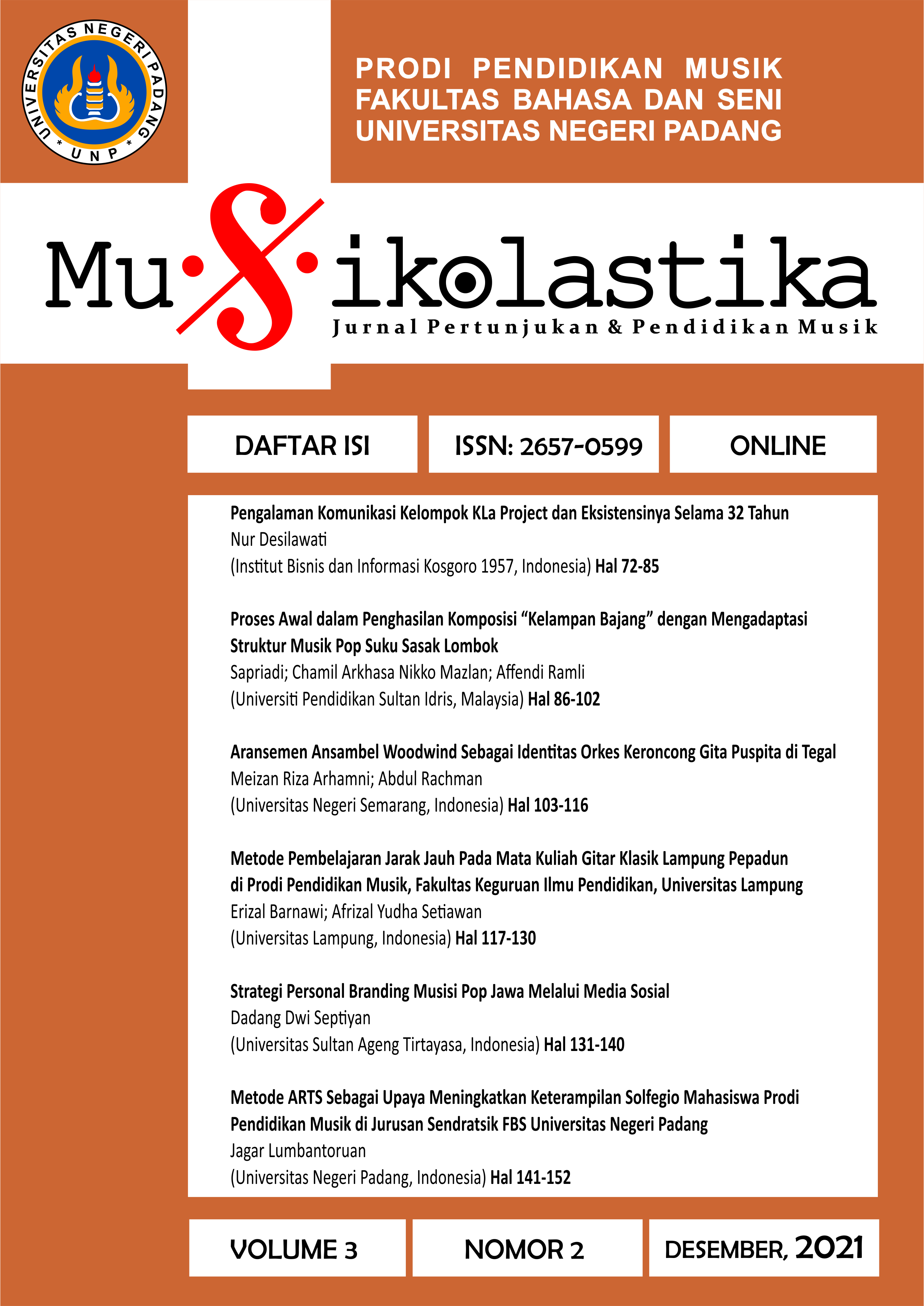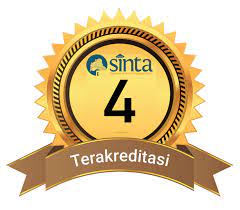Metode Pembelajaran Jarak Jauh Pada Mata Kuliah Gitar Klasik Lampung Pepadun di Prodi Pendidikan Musik, Fakultas Keguruan Ilmu Pendidikan, Universitas Lampung
DOI:
https://doi.org/10.24036/musikolastika.v3i2.70Keywords:
Lampung classical guitar, distance learning methods, students, music educationAbstract
The difficulties in learning the Lampung Pepadun Classical Guitar practice are caused by several factors, including; 1) the learning process is not guided directly by trainers who are experts in their fields; 2) many students of the Music Education study program are not yet able to read block notation in the form of songs; 3) some students do not have the skills to play guitar with the correct technique. The long-term goal in learning Lampung Pepadun Classical Guitar is that students are able to become agents of change in preserving the art of Lampung Pepadun Classical Guitar and become pioneers in developing and creating music, both contemporary music and creative music. The specific target to be achieved in this research is the creation of a new teaching pattern in the field of Lampung traditional music, namely learning by using several applications and distance learning methods in accordance with the concept of learning. Several online learning methods have been applied using various applications such as Youtube, MP3, and Sibelius. Online learning is learning that is carried out without face to face directly, using smartphone/gadget/laptop devices, and video conferencing platforms as a space for the learning process to take place. However, the seven learning components which include teachers/lecturers, students, objectives, materials, methods, media, and evaluation must remain an integral component of online learning, which will be integrated in achieving learning objectives
Downloads
Downloads
Published
How to Cite
Issue
Section
License
Authors who publish with this journal agree to the following terms: Authors retain copyright and grant the journal right of first publication with the work simultaneously licensed under a Creative Commons Attribution-ShareAlike 4.0 International License. that allows others to share the work with an acknowledgement of the work's authorship and initial publication in this journal.
Authors are able to enter into separate, additional contractual arrangements for the non-exclusive distribution of the journal's published version of the work (e.g., post it to an institutional repository or publish it in a book), with an acknowledgement of its initial publication in this journal. Authors are permitted and encouraged to post their work online (e.g., in institutional repositories or on their website) prior to and during the submission process, as it can lead to productive exchanges, as well as earlier and greater citation of published work (See The Effect of Open Access).

This work is licensed under a Creative Commons Attribution-ShareAlike 4.0 International License.



.png)




1.png)



